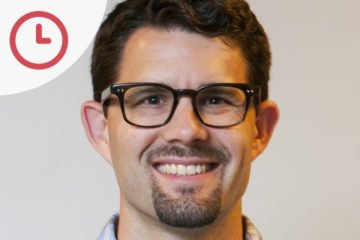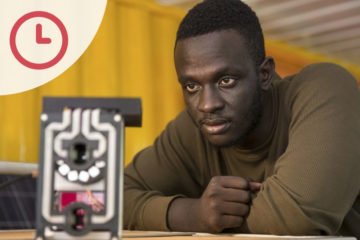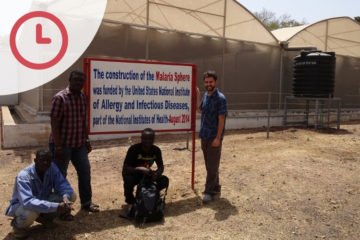Podcast Available on iTunes and Spotify.
Hello, I’m Thomas Locke and this is Five Minutes, the podcast that brings you closer to the malaria experts.
The Mobile Malaria team, led by Dr George Busby from the University of Oxford, are about to set off on a six-thousand-kilometre journey across Africa.
They’ll be making the journey in a Land Rover, taking portable DNA sequencing technology on the road.
Sequencing DNA is no mean feat, it requires lots of specialist equipment, stuff you’d normally find in a lab. But this project won’t be done in a high-tech laboratory, it’ll be done from the boot of a car.
I recently spoke with Dr Busby and began by asking how they’re able to take this highly technical operation on the road.
The real innovation that we’re using on this trip is a portable DNA sequencing machine called an Oxford Nanopore MinION. It is very small and it’s very portable. It is, therefore, possible for us to carry this around with us in a car, we’re not the first people to carry it around in a car. What we’re trying to do is be able to take not just the MinION but also a bunch of other lab equipment. There are other pieces of equipment necessary for doing DNA extractions and for checking the quality and quantity of DNA that we think we can all fit that in the back of the car.
In terms of mosquito genome sequencing in itself, why would someone want to do that? What will it tell you?
The pieces of information from DNA that we’re really interested in getting are two things really. We now know that mosquitoes are now becoming more and more resistant to insecticides so we can look for patterns in DNA that we can use to predict whether or not a mosquito is resistant to particular insecticides. That’s one piece of information that we hope the DNA can help us with, understanding the levels of resistance to insecticides of mosquitoes in a certain area.
The other piece of information that we’re interested in getting from DNA, from mosquitoes, is understanding how particular mosquitoes and mosquitoes in a particular village relate to mosquitoes from other villages. DNA can tell you something about the relationship between different populations and that’s the sort of information we’re trying to get from our project.
How comprehensive will this study be? On your website, you’ve said it’s a “snapshot” of malaria in these countries. How accurate will this data be and is it fair to call it comprehensive?
It’s not going to be very comprehensive, no. This is really a test of the feasibility of this equipment to be used in low resource settings so the data we generate will be very preliminary and actually the thing we’re really interested in doing is trying to see if we can go from start to finish with all the resources that we can fit in the back of a car, rather than thinking about whether or not we can use this data long-term.
The data that you collect itself, I understand that you’re not actually going to publish that anywhere, you’re going to delete it once it’s being collected?
Yes absolutely. The real thing we want to try and do is to test whether or not this technology works and to allow the geneticists that we’re working with who work locally in Kenya to potentially use this technology in the future or further develop it in the future. We’re not too interested in keeping this data, we’re not going to take anything with us. What we will be doing though is hopefully leaving people who work in the part of Kenya where we’re working long-term, we’re hoping to leave with them enough knowledge and training to use the machines as well as a starter pack so that they can try and use the machines without us after we’ve left. This is really about testing the feasibility of the technology in the field and giving local African scientists the opportunity to try and use this new technology, which we think is really cool because it’s very small and portable.
And there’s also another site of this project, which is the public engagement side of this. You’re hoping to podcast every step of your journey. Why did you want to do that?
As you say, part of this is about public engagement. I think that the journey that we’re taking from one side of Africa to another takes us from Namibia, where I am at the moment and there’s no malaria in the place where I am at the moment, which is right on the coast. But the transect that we will be taking will take us through a lot of different environments where malaria is and I think what we’re going to find out in this journey will be pretty interesting because we will be going through lots of different habitats, lots of different types of terrain, lots of different types of environment and malaria will be present in all of them. So, understanding how the diversity of environments and communicating how diverse environments can still struggle with malaria is part of what we’re trying to do from this trip.


